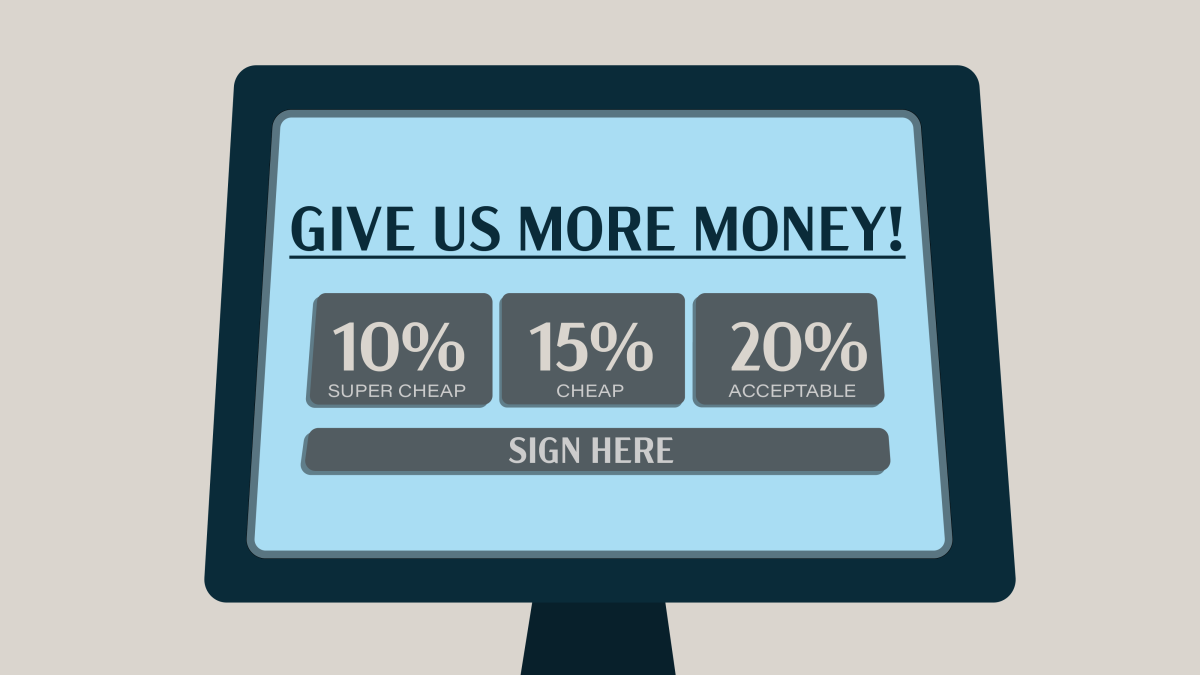Have you ever gone to a restaurant, ordered your food and then been stared down by the waiter for a tip? That looming guilt you feel is a capitalism cocktail-garnished with societal pressure.
Tipping is usually the most unnecessarily stressful part of the dining experience; as soon as the bill hits the table, you’ve got to start doing math and mental gymnastics to calculate the appropriate tip amount.
Currently, service workers make between $2.13 and $5.12 in most states, the U.S. Department of Labor reported. Restaurants use tipping to accommodate their wages, but that’s not enough.
“What most people don’t realize is that servers have to share tips with cleaning staff, hosts, and kitchen staff,” said nutrition freshman and former waitress, Adan Hyde.
Hyde said she was paid $4.16 an hour as a waitress at Zea Rotisserie, not including what she made off tips. Dissatisfied with the pay for the work she did there, she moved to Walk-Ons where she was paid $10 an hour, which said better reflected the work she did.
To counter dismal server wages, lots of big cities have begun including a 20% mandatory service charge that’s counted as the tip. Any additional gratuity is optional. This system allows service workers to earn livable wages while still having the opportunity to make tips.
If more restaurants incorporated this, they’d have better staff retention and employees wouldn’t have to look over their shoulder, wondering if they can pay their bills on time.
“By including gratuity automatically, it allows the server to have more security in their work,” Hyde said.
The 20% service charge is comparable to the 10-15% sit-down charge that’s done in other countries, according to an article by Western Union. There, servers’ paychecks are enough to accommodate them.
Most American restaurants and bars only include taxes and fees instead of an added gratuity. This means servers are severely underpaid and customers are simultaneously pressuring to compensate the restaurant staffs’ wages.
In addition, most service workers are tipped based on service performance. It’s pure insanity that one bad day could be the difference between paying rent on time or being behind on other bills. Customers who don’t adequately tip for whatever reason have the same effect.
Performance-based tipping creates a falsified environment where waiters put on an act to please their customers. If a customer feels disrespected, unattended to or has a mediocre experience, the server’s tip will reflect that.
While customers should show each other respect, most don’t know what the service industry is really like and why their server may be acting a certain way.
This has led to a sense of entitlement from the customers to the waitstaff and puts an immense amount of pressure on them. It can also create a competitive rift among members of the waitstaff, meanwhile the owners and employers get away with underpaying their staff.
The current tipping system also doesn’t take recessions and financial hardships into account. Sometimes customers can only afford the food and not the service. Not tipping is socially frowned upon unless you’re ordering takeout, so a lot of customers use this method not only for convenience, but to avoid tipping as well.
Some people believe if you can’t tip, then you shouldn’t go out, but this isn’t fair. People should be able to enjoy themselves at a restaurant or club without worrying about the social pressure to put money in someone else’s pockets.
Customers should not be responsible for the wages of service workers. If employers compensate their employees appropriately, we could do away with the tipping system altogether.
Jemiah Clemons is a 19-year-old kinesiology freshman from Miami, Florida.







